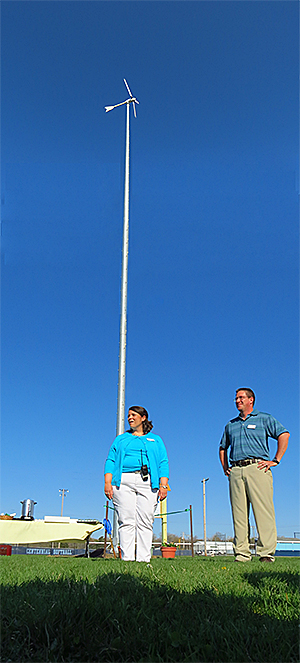On Midway Island in the Pacific Ocean, a mother albatross returns from a trip out to sea to feed her chick. Unfortunately, she has mistaken a few of the countless, small pieces of plastic in a floating island of garbage as an appropriate meal for her chick, which will die as a result.
With the negative impact of ocean-bound plastic waste, a trend of increasing gas prices, and an uncertain future in foreign oil importation, many people think changes are needed to protect both the environment and the economy.
As part of the effort to address these concerns, researchers at the Illinois Sustainable Technology Center (ISTC) are looking into the process of converting carbon-rich plastic into oil that could kill—or in this case, save—two birds with one stone. They hope that a system of creating energy out of otherwise wasted plastic material will scale back the amount of plastic waste that ends up in landfills, the oceans and other waterways as well as decrease the nation’s dependence on foreign oil.
While plastic recycling programs are prevalent in many communities throughout the United States, much of the plastic that people dispose of is mixed in with regular garbage that is bound for a landfill.
Because the base material for most plastics is petroleum, it is possible to recover a percentage of that starting material with a series of chemical reactions.
“If we cannot recycle that completely then why should we waste that carbon?” asks ISTC Senior Research Scientist B.K. Sharma, who leads the ISTC’s plastics-to-oil project.
As a way to step in and prevent this plastic waste from going out the door and into an ocean or a landfill, Sharma and other researchers at ISTC are studying one way to add another “r” to the popular phrase “reduce, reuse, recycle.” They hope to add “recover”.
In order to recover that oil, plastic must be heated to a high temperature in the absence of oxygen in a process called pyrolysis. In one of the labs at ISTC, researchers load plastic into one of the two containers of a bench-top device, seal the top and begin to apply heat.
As the temperature increases, the molten plastic material breaks down into petroleum compounds, and a gas is produced. The gas rises to the top of the container, passes through a tube and empties into some water held by the device’s second container. Here, the gas vapors condense into liquid oil. The oil is less dense than the water, so it rises to the top and can be collected.
The process can convert three types of plastics into oil—polyethylene (recycling numbers 2 and 4), polypropylene (5) and polystyrene (6).
One of the most visible uses of polyethylene is in plastic grocery bags. Whether drifting down the street or caught in a tree, these bags seem to be everywhere, creating a widespread litter problem that is very difficult to clean up.
Plastic bottle caps and yogurt cups are examples of polypropylene that can be converted into oil. However, a silicone lining is often underneath the top of the cap to prevent leaks and must be removed prior to pyrolysis. Examples of polystyrene products include Styrofoam, disposable cups, plates, cutlery, and jewel CD cases.
Sharma’s work is part of a larger body of research into the pyrolysis process, which he and other ISTC researchers have been studying for over two years. They have been using waste biomass as the starting material in much of their research, and six months ago Sharma began looking into using plastic as a feedstock.
During small-scale lab runs, one gallon of oil is produced from eight lbs of plastic, Sharma said. Although only small amounts of plastic-derived oil are being produced by ISTC research, Sharma feels that if implemented on a larger scale, the resulting crude oil can be further refined into significant amounts of energy products, such as diesel, gasoline, and jet fuel.
ISTC is a division of the Prairie Research Institute at the University of Illinois in Urbana-Champaign.
For more information call:
B.K. Sharma, ISTC Senior Research Scientist
217-265-6810
Radio stations WDWS and WHMS interviewed Dr. Sharma about the project. The archive is available here: PLASTICSWRAP
 On Earth Day, April 22, Jefferson Middle School hosted a ribbon cutting to celebrate the completion of their 3.5 kW h wind turbine project.
On Earth Day, April 22, Jefferson Middle School hosted a ribbon cutting to celebrate the completion of their 3.5 kW h wind turbine project.

